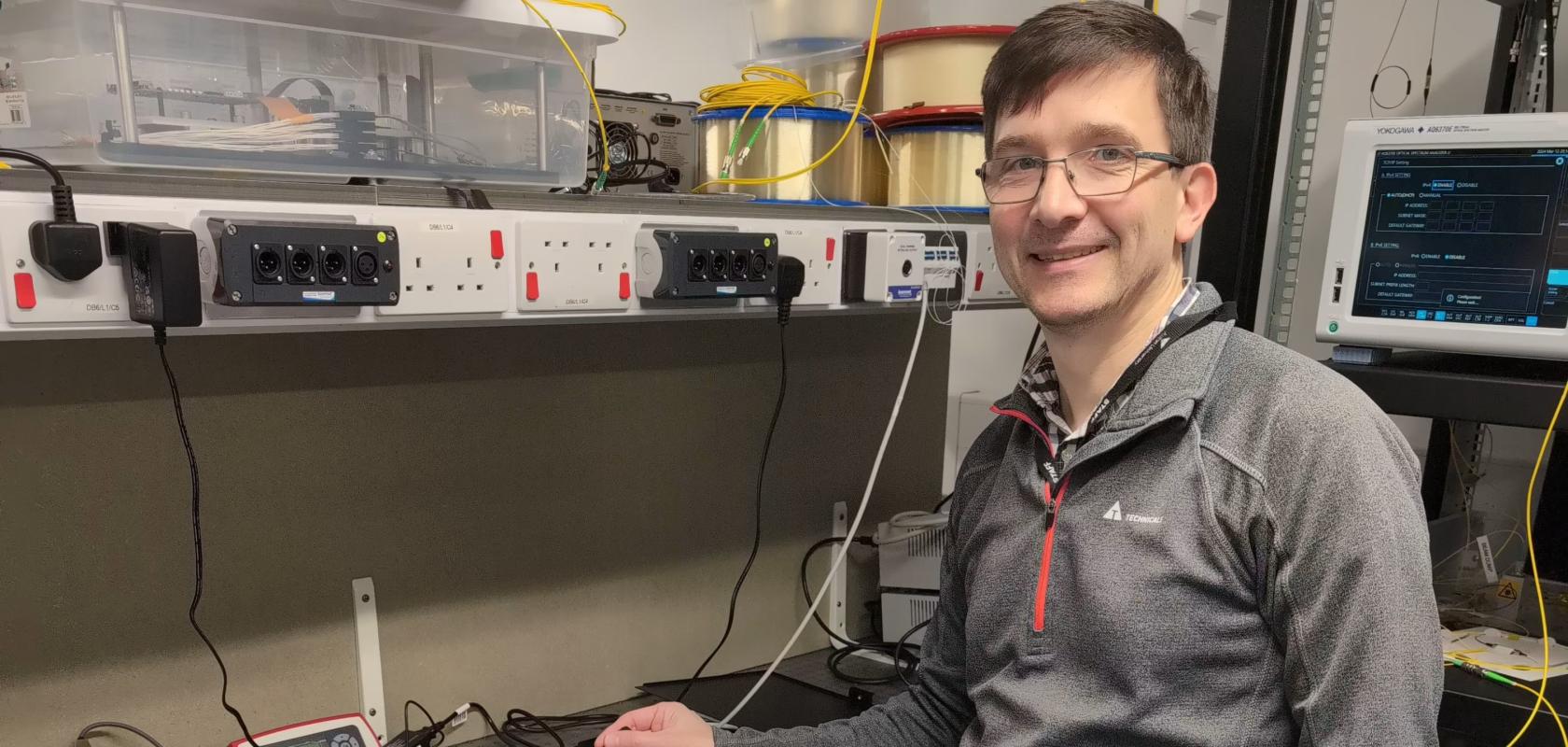Aston University, in collaboration with an international research team, has achieved a groundbreaking data transmission rate of 402 terabits per second using commercially available optical fiber. This surpasses their previous record of 301 terabits per second, set in March 2024.


Key points:
- Research team:
- Professor Wladek Forysiak and Dr. Ian Philips from Aston University’s Institute of Photonic Technologies (AIPT)
- Led by the National Institute of Information and Communications Technology (NICT) in Tokyo, Japan
- Includes Nokia Bell Labs (USA)
- Significance:
- Potential to increase capacity on existing fiber infrastructure
- Addresses growing demand for data services
- Could help maintain stable broadband prices despite improved capacity and speed
- Technical achievement:
- First optical transmission system covering six wavelength bands (O, E, S, C, L, and U)
- Aston University contributed U-band Raman amplifiers
- Uses standard fiber, eliminating the need for new specialist cables
- Speed comparison:
- Over 100 million times faster than the recommended 3 Mbps for HD streaming
- Approximately 33% increase in capacity compared to previous record
- Methodology:
- Utilizes a wider spectrum (six bands instead of four)
- Employs standard optical fiber already widely deployed
The research was presented at the 47th International Conference on Optical Fiber Communications (OFC 2024) in the USA on March 28. Funding for this work came from EPSRC (UKRI), the Royal Society, and the European Union.
Professor Forysiak described the achievement as a “hero experiment” made possible by multinational collaboration and recent advances in telecommunications research. This breakthrough could significantly impact the future of optical communication infrastructure as data demands continue to grow rapidly.


